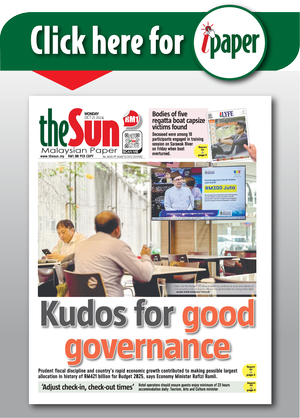PETALING JAYA: Once seen as a teenage rite of passage, orthodontic treatment is fast becoming a lifestyle and career investment for adults across Southeast Asia.
With clear aligners leading the charge, the region’s orthodontics market is moving from luxury to mainstream healthcare, a shift that insiders say is being driven by aesthetics, affordability and digital disruption.
The global orthodontic supplies market is projected to reach nearly US$ 11 billion by 2030, growing at an annual rate of 8.9%, according to Grand View Research. In Malaysia, adult demand for orthodontic solutions is one of the fastest-growing segments, and dental practitioners say the trend is only just beginning.
Speaking to SunBiz, Dr Harveen, orthodontics practitioner at Dr Clear Aligners, said the industry is undergoing a transformation.
“Orthodontics in Southeast Asia is no longer just a luxury service, it has become a mainstream health and lifestyle investment,” she said, adding that aesthetic demand, digital innovation, youth demographics and dental tourism are the main drivers reshaping the market.
Traditionally linked with teenagers, orthodontics now attracts a significant adult clientele, particularly working professionals between 25 and 40 years old.
“Adults want to improve their smile not just for confidence, but also for their professional image,” Dr Harveen said.
She estimated that adults make up 25% to 35% of orthodontic patients in Malaysia, with clear aligners dominating this segment. Many of these patients are motivated not just by looks, but also by function, correcting bite problems, jaw pain or relapses from earlier treatment.
“Digital platforms don’t just advertise – they normalise and educate,” said Dr Buvanyasankari M, principal-in-charge at Dr Clear Aligners.
“In today’s culture, people want to see transformations visually. That builds both comprehension and engagement, making platforms like TikTok and Instagram incredibly influential in consumer decision-making.”
She noted that patients now walk into clinics already asking for aligners they’ve seen online. “Audiences prefer seeing ideas brought to life visually, and that shapes both awareness and expectations,” she added.
One of the biggest barriers has always been affordability. Clear aligners, often positioned as premium products in Western markets, are being adapted for Southeast Asia’s price-sensitive consumers.
“At Dr Clear Aligners, we provide straightforward basic packages, with additional charges only for extra services,” Dr Buvanyasankari said. “Our goal is to make treatment accessible because we believe everyone deserves the opportunity to achieve a confident, healthy smile.”
As more international and local providers enter the clear aligner space, Malaysia and its regional peers are emerging as highly competitive markets.
“Local brands, hybrid teledentistry, and dental tourism are what set this region apart,”
But with competition comes new challenges. “Price competition will intensify, so clinics need to stand out through quality, speed, and the overall patient journey,” Dr Buvanyasankari said.
Both practitioners agree that technology will shape the future of orthodontics in Southeast Asia. Artificial intelligence is being used to predict treatment outcomes, while in-house 3D printing and digital monitoring are reducing costs and enabling remote follow-ups.
Still, both dentists believe the outlook is positive. “As more adults care about aesthetics and social media exposure, demand will likely stay strong,” Dr Buvanyasankari said.
Shei pointed out that insurance remains a challenge. “Most health and dental policies in Malaysia do not cover orthodontic treatments. Even as technology advances, affordability may remain a barrier for many,” she said.









